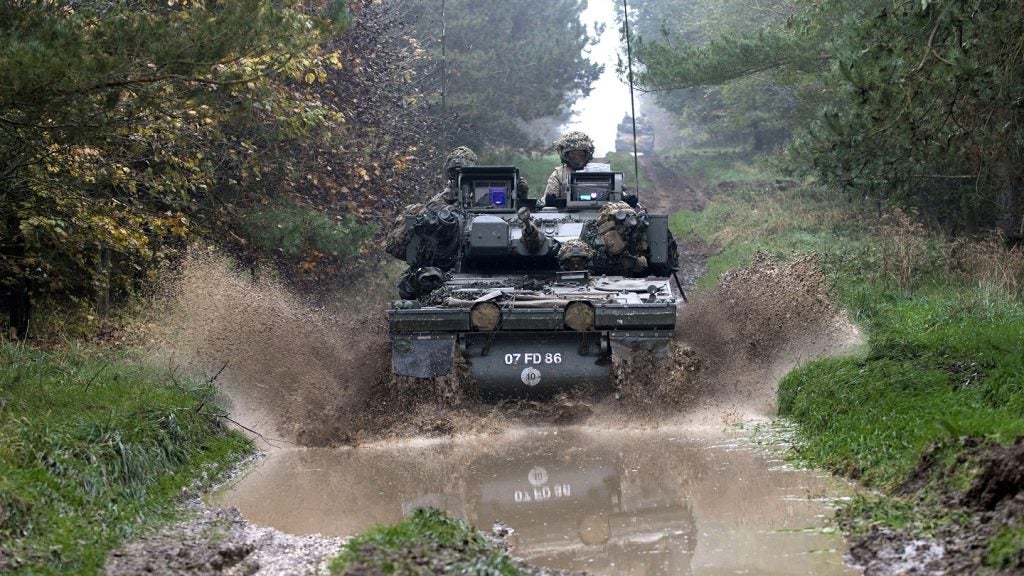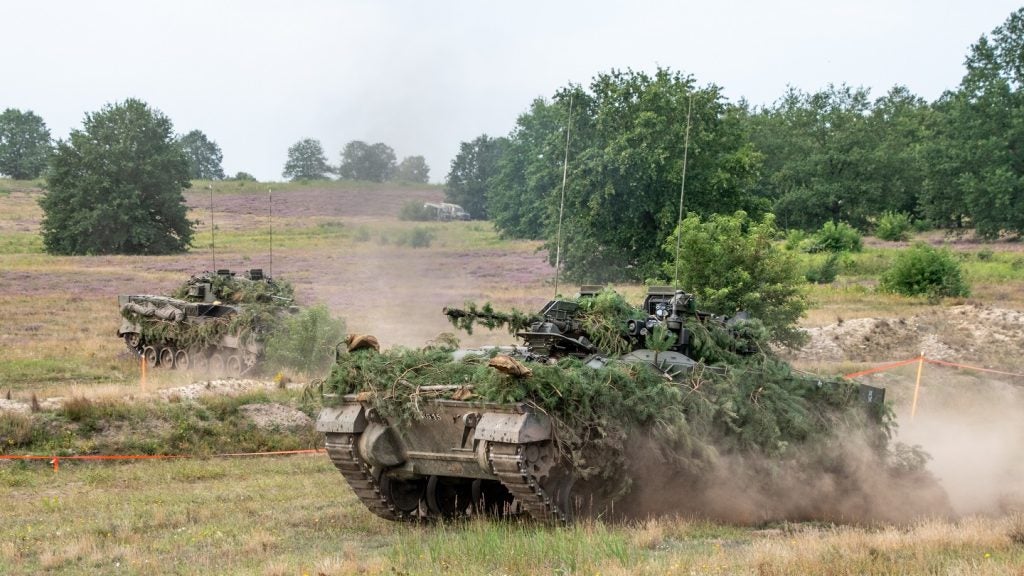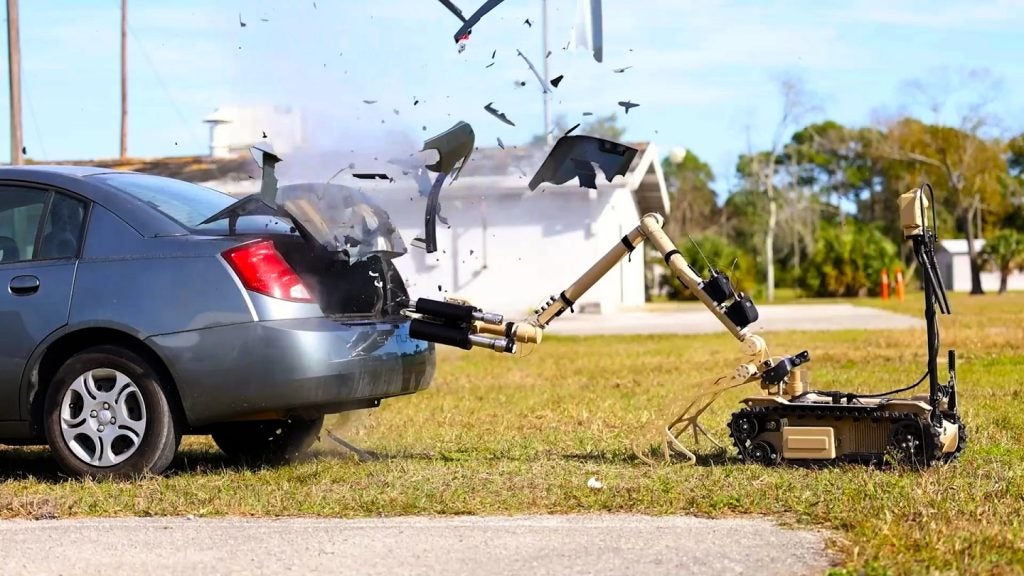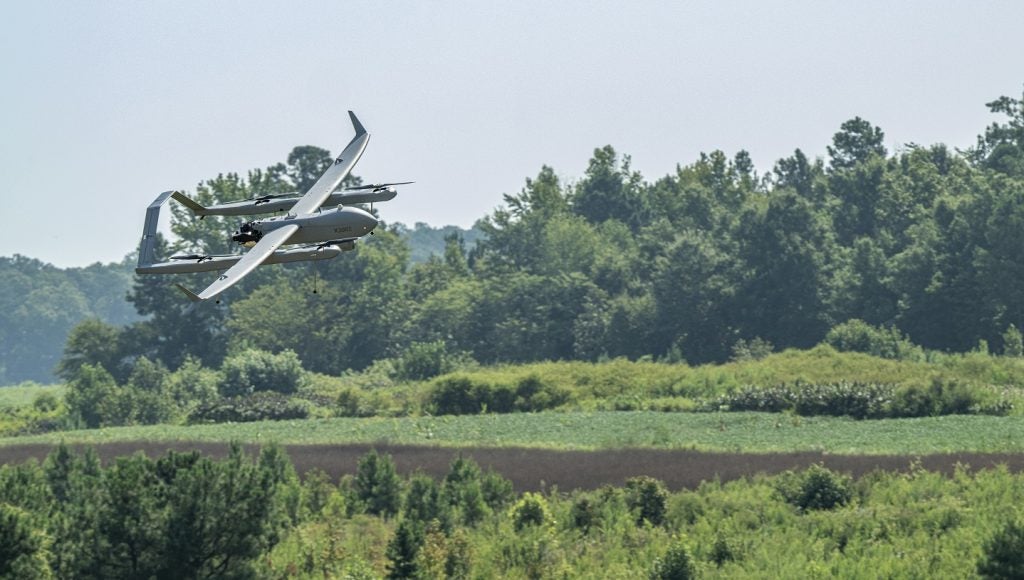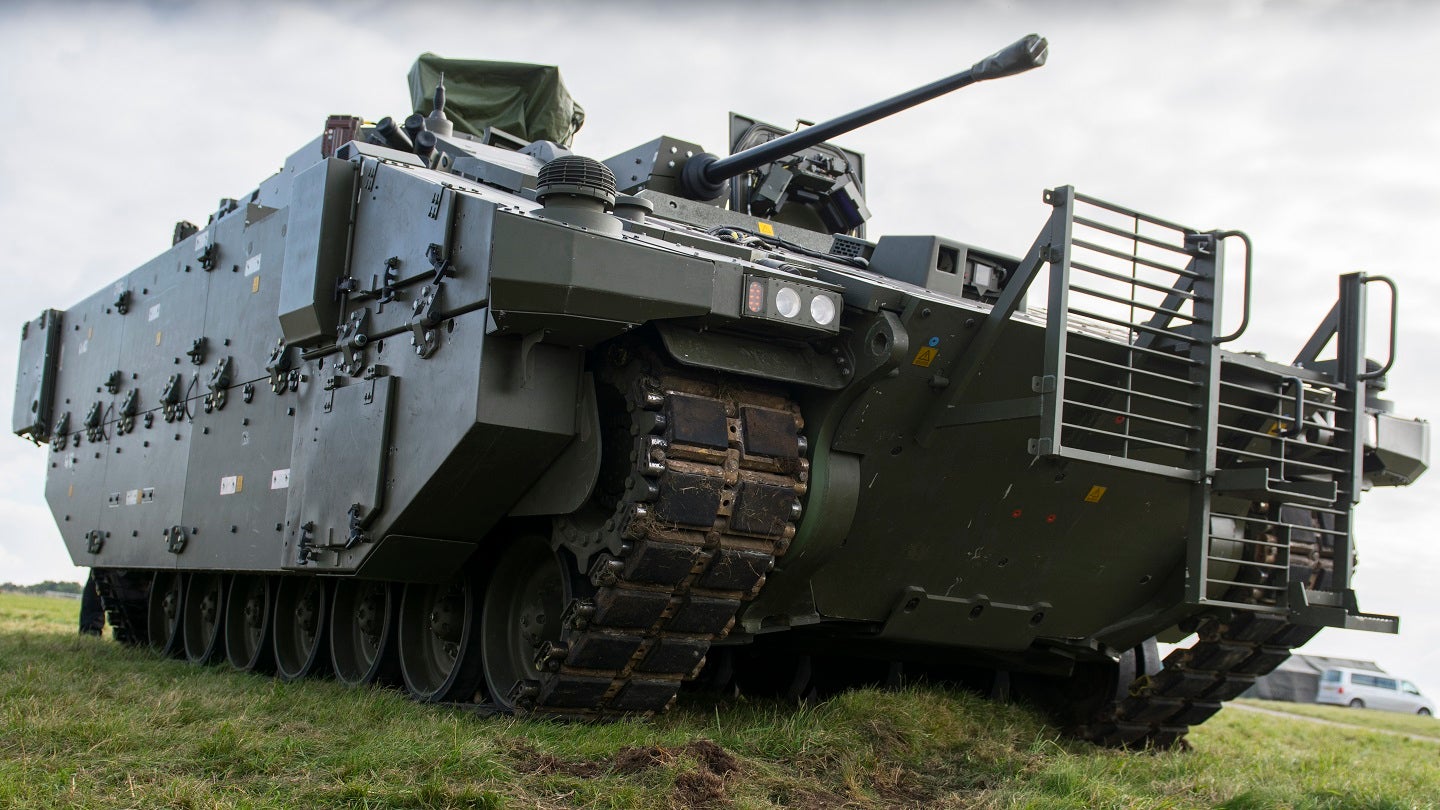
The British Army has resumed individual and crew training on the Ajax armoured vehicle, which will be carried out on the initial production standard platform – known as Capability Drop 1 – to familiarise personnel with operational practices and inbuilt systems.
The Ajax development programme had been halted in 2021 due to excessive vibration and noise leaving crews in need of medical attention, and only entered Reliability Growth Trails at the beginning of this year.
According to a 15 June release by the UK Ministry of Defence (MoD), the move for the British Army to resume crew training was a “positive step” on the Ajax armoured vehicle programme.
In an earlier 20 April UK parliamentary written response, it was revealed that personnel operating Ajax in Reliability Growth Trials were using “dual layer” headsets, comprising of the in-service Crewguard Mk2 headset and the Communications Ear Piece inner headset. This configuration was successfully demonstrated during the Ajax User Validation Trials, it was stated.
The User Validation Trials were bespoke trials undertaken to test the effectiveness of the proposed modifications to the Ajax platform, with costs for this process covered by the contractor. The UK MoD had to bear approximately £650,000 in costs for the preparation, execution and analysis of the independent monitoring and instrumentation necessary for the joint trials.
The resumption of training will enable the crew to develop skills and experience with the vehicles before delivery of the later Capability Drop 3 vehicles, which will be fully deployable, the 15 June release stated.
To date, 44 vehicles at Capability Drop 1 have been delivered to the British Army, with the Capability Drop 3 variants currently being manufactured at US-based contractor General Dynamics site in South Wales.
With 44 vehicles delivered to the British Army, the Ajax programme is nearing the 50-unit milestone that will see the type apparently achieve Initial Operating Capability. Of the first 50 vehicles, 27 will be used by a deployable squadron, with the remaining 23 utilised by the British Army for crew and maintainer training.
In total the programme is intended to deliver 589 platforms across six variants, incorporating the Ajax infantry fighting vehicle, Apollo armoured recovery vehicle, Ares armoured personnel carrier, Argus reconnaissance vehicle, Athena command post vehicle, and Atlas engineering vehicle into British Army service.
Minister for Defence Procurement, James Cartlidge, said the development was a “significant moment” for the British Army and a “huge step” forward for the Ajax programme.
Through Reliability Growth Trials, the Ajax, Apollo, Atlas, and Ares variants have driven more than 6,600km, completing a variety of representative battlefield tasks such as operating across a range of speeds, firing weapon systems, using the vehicles systems and communications and completing specialist tasks such as vehicle recoveries and repairs using the integrated crane, stated the MoD.
Earlier this year, the MoD also confirmed the resumption of payments to General Dynamics for the delivery of the programme, with a “robust firm price” contract remaining for the delivery of the 589 vehicles, “which will ensure that General Dynamics are incentivised to deliver against agreed outcomes”.
Ajax’s elongated timeline
At the end of 2022 a series of parliamentary written responses provided crucial updates for the programme’s timeline, which revealed that Reliability Growth Trials and subsequent analysis, due to begin in January 2023, could run until Q1 2025.
In addition, according to the UK’s Defence Equipment Plan 2022-2032 there was “no…realistic timescale” for when Ajax and its variants could enter service.
This future capability is a key element to the restructure of the British Army, initially into the so-called Strike Brigades and more recently into Brigade Combat Teams, a term apparently lifted straight from the US Army’s owned force structures.
By mid-October 2023 a pause in testing had been lifted, enabling some limited User Validation Trials to take place, with the completion of this stage allowing the programme to move towards the Reliability Growth Trials.
In a programme analysis in the UK MoDs Defence Equipment Plan released in December 2022, it was reiterated that “technical issues with noise and vibration” had resulted in delays to the Armoured Cavalry Programme, under which Ajax is to be delivered.
The UK MoD placed a £3.5bn ($5.56bn) order for 589 Ajax vehicles in September 2014, although the programme has its origins from the late-2000s and the Scout SV programme.
In March 2010 General Dynamics UK was selected as preferred bidder against the BAE Systems CV90, and later that same year the UK MoD awarded a £500m contract to GDUK for prototype development, based on the Spanish ASCOD armoured vehicle. The first prototype Ajax vehicle was unveiled in 2015.




